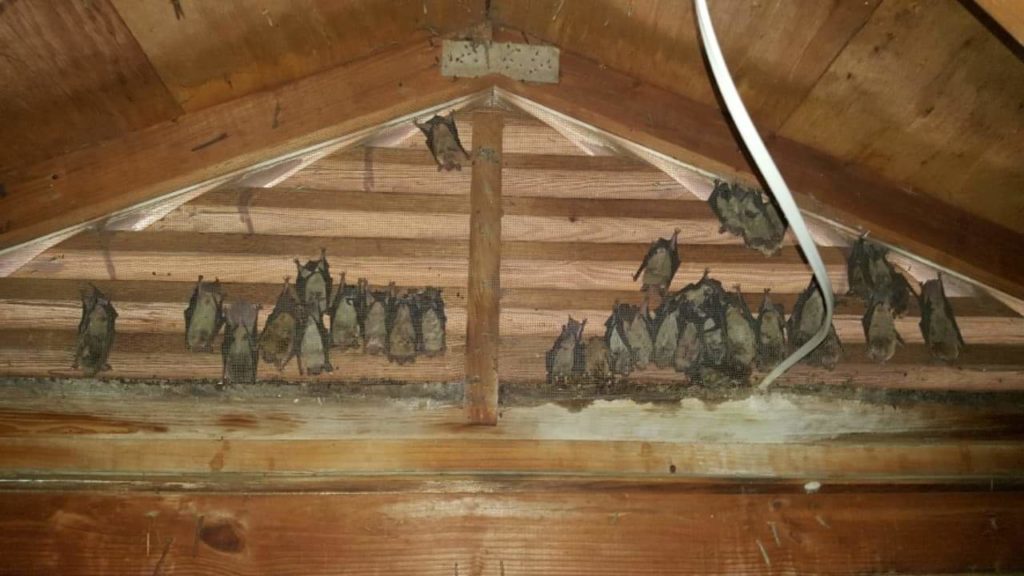What is Bat Exclusion?
Bat exclusion is the practice of installing and sealing off access points to keep bats out of your attic, barn, or other structure. All buildings and homes have structural imperfections that nuisance wildlife and pests will utilize to gain access to your home or business. With bat exclusion, you provide solutions that make it difficult for bats to enter your home or attic.
Bat exclusions are done both as preventative measures, as well as during and after a colony of bats have been professionally removed from an attic or structure.
Prevent Bats from Getting in the Attic
It is very important to have your home inspected by a professional wildlife removal expert to assess your home’s integrity and seal areas that make it vulnerable to wildlife and pests. Bats are incredible for the ecosystem, but bats become a real problem when they get into your attic.
Most often, homeowners will hire a handyman to take care of their problem not realizing a general handyman is only trained to make repairs, not animal proofing repairs. Wildlife control companies have the knowledge of animal behavior to properly ensure the home is repaired and sealed to prevent animal reentry.
Bat Exclusion Methods
There are many methods available for bat exclusion, however, some of the most reliable methods require a professional to install or construct. Before you perform any DIY bat removal or exclusion, make sure you are aware of the extensive cleanup work, repairs it may require, as well as the dangers associated with handling bat guano. For the safest, most humane bat removal and bat exclusion, we recommend calling in the pros.
Before you begin any bat exclusion, observe your home or building around sunset or sunrise to spot all areas or locations where bats are entering.
- Install a bat house prior to conducting exclusion if you wish to maintain these insect‐eaters in your back yard.
- Install a one‐way door over the opening(s) and wait a week until all of the bats have left.
- Permanently seal the access points with appropriate materials such as caulking or expanding urethane foams.
- When bats crawl under doors, the space between the floor and the door bottom may be sealed with weather-stripping, a draft shield, or a gap stopper to close off the space between the bottom of the door and the door sill or threshold.
- Install flashing at joints (walls meeting the roof or a chimney) flashing may be installed to keep the building watertight. Flashing consists of strips of metal or other material to cover cracks, crevices, and holes.
- Bats can enter ventilators that are not properly screened. Hardware cloth for ventilators should be 8 x 8 mesh. The screen mesh must be small and sturdy enough to prevent the bats from entering. It is recommended to use steel hardware cloth that is 0.63 cm (1/4 in.) mesh with three meshes or more to the inch.
- The soffit ventilators should not exceed 0.63 x 2.5 cm (1/4 x 1 inch). Inlet and outlet ventilators should be properly installed. The type of ventilator used, its location in the building, and the directional wind currents may be important factors to consider.
- Prevent bats from entering chimneys by installing spark arrestors or bird screens.
Professional Bat Removal and Bat Exclusion Services
Bat Control & Removal experts are trained in bat removal as well as carpentry services. We take every effort to make our work match the aesthetics of the home, making sure your home looks great. We only use the highest-grade construction materials and stand behind our work with the industry’s strongest guarantee. If you have a bat problem, give us a call today!


